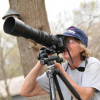Baby Raptor Renesting with Great Horned Owlets
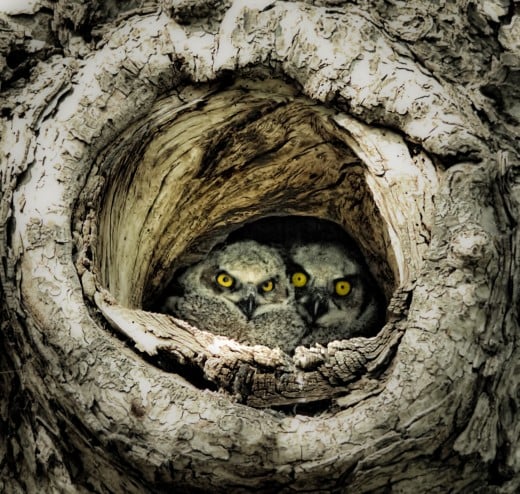
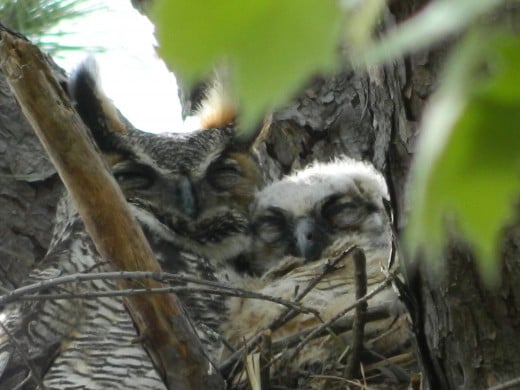
Raptors are fascinating birds, as most of them tend to come to life at dusk and get ready to hunt in the evening, namely owls. Owls are associated with things that go bump in the night and are considered very mysterious. Many people around the world fear them, and many people believe that they can turn their heads 360 degrees, which is not possible for any living creature. They can turn their heads almost 180 degrees in either direction, and do it so quickly, that people’s eyes play tricks on them. Appearances are deceiving in many things, and that is one of them.
As an example, I will use Great Horned Owls as the raptor in question in this article, since I have had experience with several renestings. Upon occasion, when two or three owlets are born, as they grow, the nest can’t always accommodate all of them. If there is a third, this one ends up being the runt and cannot get enough to eat. The bird is smaller, usually the last hatched, and has trouble getting enough to eat due to its size. Sadly, this bird generally perishes due to malnutrition, and is tossed out of the nest in many cases if it dies due to natural causes. It might even be pecked to death by its siblings, and they do the honors of removing it, instead of a parent.
This leaves two owlets, and the nest can generally handle these two without much of a problem. However, weather can play a factor in another one going out of the nest. Wind and heavy rains can take their toll on the integrity of the nest, which is usually sticks with soft underlining, be it grass or feathers, or any other soft material that Mother Great Horned Owl uses. The young ones can get rambunctious, as well, and one can toss the other out. The are other occasions where the host tree might be cut down for whatever reason, too, such as in the case of building a house on the property. Then all the owlets in the nest will need help.
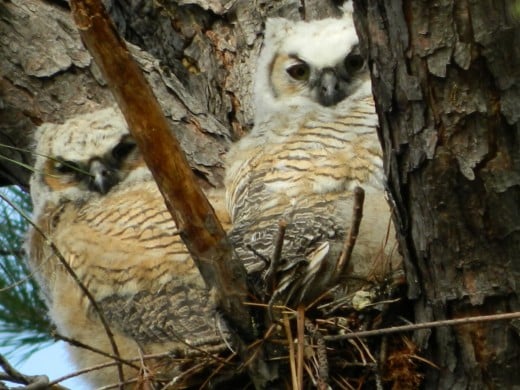
If this nest happens to be on someone’s property in view of the house, the residents may contact a rehabilitator to advise of the fact that an owlet is out of the nest. These nests are 30-40 feet up a tree, usually a conifer of some sort, namely a pine tree. Mother Owl is unable to return her youngster to the nest, but she might still try to feed him or her.
When a rehabilitator is contacted, either they will pick up the owlet, or it could be brought to their location by the homeowner. It is important that the owlet be given a physical by the rehabilitator to make certain that it has not suffered any injuries from the fall or that it is not dehydrated or malnourished. It might stay with the rehabilitator for a few days to ascertain its health.
Sometimes the owlet is referred to as being a “brancher,” which means that he or she could have stepped out of the nest on its own, lost its balance and fallen out of the tree. Again, the brancher should be checked by a rehabilitator.
If the nest has been destroyed, here’s where the interesting part comes in. I must caution you not to try this on your own, please, due to the safety implications. Rehabilitators are trained to climb trees and renest these baby raptors. They know how to get up the tree safely, be it with a ladder or to climb on their own, or use a ladder and climb the rest of the way. For purposes of safety, I will just give you the basic scenario on this operation and deliberately miss a few steps, so that the urge to do this won’t be so simple and inviting to those that may be on the adventurous side.
Basically, the rehabilitator will have a wicker laundry basket, pine needles, and other paraphernalia that will make an appropriate nest for an owlet or two, if need be. This makeshift nest will be safely attached to either the tree in question or another tree, if the original nest cannot be safely reached, or the tree has been destroyed where the nest was located. Then the owlet(s) will be placed in the nest with a few mice to hold them over until Mother and/or Father Owl return to resume her/his motherly/fatherly duties.
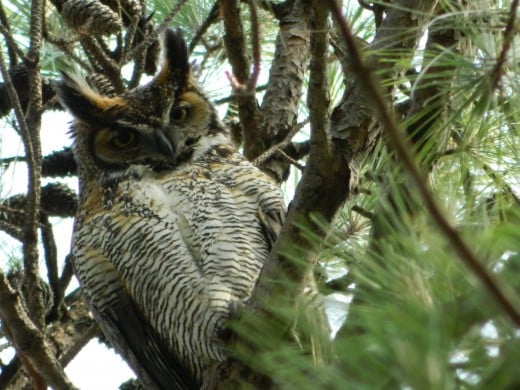
Dollars to doughnuts, one or both parents have been observing you attempting to return the baby or babies. They will call for their parent(s), and the parent(s) will recognize their calls, or a tape recorder will be with the rehabilitator to call the parent(s) for the owlets.
Rehabilitators run the risk of being attacked by these Great Horned Owl adults, which is another reason that I am not giving you a play-by-play part in renesting baby raptors.
I hope that this has given you owl lovers and those that are curious about how baby raptors are returned to their parents if and when the need arises. I found that being a part of a renesting team was very rewarding. Just in case you’re curious, an owlet grows into their beaks and claws, and they know how to use them, due to the nature of the bird.
If you like to watch birds, or hope to discover the beauty of adult and young owls, I will tell you this interesting information. An owl’s nest is 30-40 feet up a pine tree. You might hear or see the owls, but you will discover what is referred to as “scat” on the trees with active nests. This is white excrement running down the tree. There will also be pellets on the ground. Owl pellets are regurgitated, and is the material that the bird is unable to digest, like bones, beaks, and feet.
Happy owl hunting! Keep your nose to the ground and your head in the air and you will one day find owl’s nests. Bring your cameras, too, and happy birding!
Great Horned Owl
How to Recognize a Great Horned Owl Call
You've heard this sound, so say, "Who Cooks for You?", and that will be the easiest way for you to remember just how the Great Horned Owl sounds.
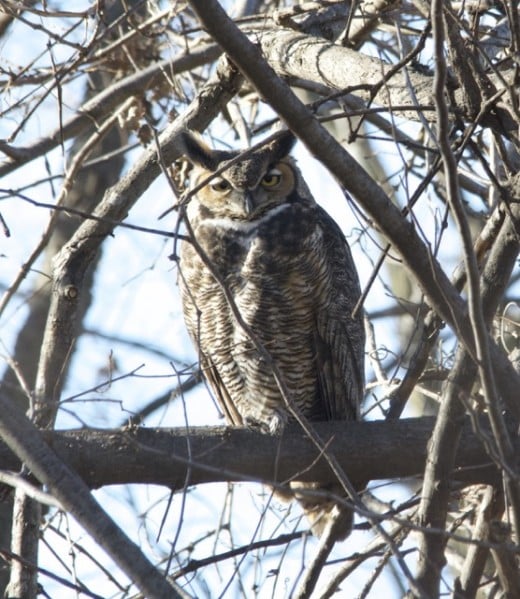
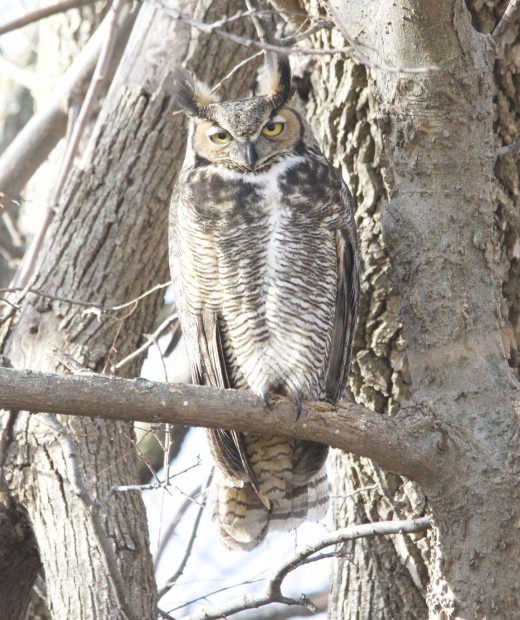
The Latest Weekly Hub on Birds!
- Life at Boomer Lake with Deb, Sunday April 29, 2012
This week has been fruitful for both birds and animals. See what there was around this time, and enjoy yourself.
Central Zone Flyways!
- Kansas Byways
Provides overviews, maps, sample itineraries and images of routes offering recreational, geological, cultural and agricultural viewing opportunities.
